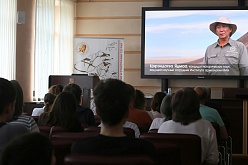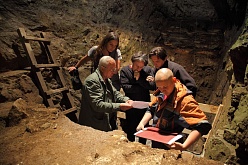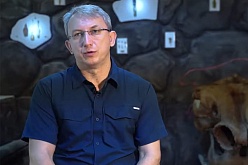Teshik Tash Grotto. A Neanderthal in Central Asia
In 2022, the expedition of the Institute of Archeology and Ethnography of the Siberian branch of the Russian Academy of Sciences worked at the Teshik Tash site in Uzbekistan. Teshik Tash Grotto gained global renown in 1938 when an ancient burial of a Neanderthal child was discovered within its confines by archeologist Aleksey Okladnikov. Subsequently, genetic analysis confirmed that the bone remains, which had already been identified on the basis of external features by Okladnikov, indeed belonged to Neanderthals.
For many years, Teshik Tash delineated the easternmost extent of the Neanderthal distribution on the Paleolithic map of Eurasia, until Neanderthal remains were discovered two thousand kilometers further east in the Altay Mountains. To this day, the materials discovered by Okladnikov during the late 1930s excavations in Teshik Tash continue to provide researchers with vital insights into the stone knapping techniques employed by Neanderthals in Central Asia, their practices for constructing dwellings, and their burial customs. However, absolute dating of the site’s cultural layers still presents a major challenge.





